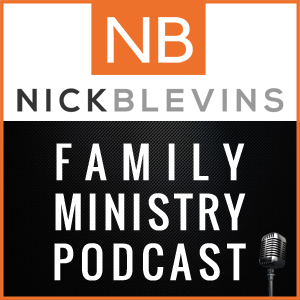I read a great post over on Tony Morgan's blog last week about focusing on health instead of growth. I completely agree with that line of thinking and one of the big questions that comes up when it comes to church health is – How do you measure that?
I think the ultimate measure of health is stories. But, stories aren't the only measure and it's hard to see trends, patterns or shifts with stories alone. My approach is to measure everything we can measure and let Metrics + Stories be our health gauge.
8 Family Ministry Metrics/Measures
Here are 8 metrics or measures in family ministry that I believe give a good window into the health of your ministry. Again, you want to listen for stories regularly and pay attention to what you hear and how often you hear it. But, keeping these metrics and watching them regularly is helpful as well.
Volunteer Ratios
Every church should know exactly how many volunteers it has, meaning people who have a specific role on a ministry team. Tony would encourage you to look at your total # of volunteers as a fraction of your average worship attendance (click here for details). But, in family ministry, I like to watch the ratio of the # of volunteers to the average attendance. For instance, you might have 200 children's volunteers and 600 children attending on average, so the ratio is 1:3 (1 volunteer for every 3 kids). You can read my thoughts about what is healthy in this post. Don't use my guide as the goal. Figure out what yours are and watch it over time. You'll know if it's not healthy.
# of Students Serving
We care a lot about students serving. I personally think serving in ministry may be the thing that grows a student's faith the most during that season of their life. We want them to be invested in the church and know it's their church. For this metric, take the number of students serving and divide it into your average student attendance (at your main student environments). So, 100 students serving and you have 300 on average in your student environments means 100/300 = 33%. I want to see 50%+ in our church and we're getting close.
Children's Ministry %
This will be largely driven by the demographic you reach, but take the average kids attendance and divide it into your average total attendance. For instance, 300 kids / 1200 total = 25%. So, 25% of your attendance is kids. Tony's metrics show the average church has 21%. If you primarily reach families I like to see that number around 23-25%.
Student Ministry %
Same concept here as you try to see students as a percentage of your overall attendance. This is more nuanced as your student gathering may happen during services, on a different night, only in small groups, etc. Take your average student attendance and divide into total average attendance. So, 100 students / 1000 total = 10%. Tony's metrics show the average church has 10%. That's a pretty good number to aim for. Keep in mind your demographics matter.
Family Ministry Staff
I think it's important to know where your staffing is as a church overall, and Tony's post here is a good guide. But, I like to watch the number of full-time equivalent staff specific to family ministries as well. You can see what churches have by completing the ratio survey and getting the results. Over 600 churches participated in the survey and you can see the results broken down by church size and other filters. Click here to get it.
Baptisms / Salvations
Depending on whether baptisms or salvations is what you primarily track (or both), I would track it over time and see what seems to be a healthy guide. The average church baptizes about 6% of its average attendance in a year. So, a church of 1000 might see 60 baptisms. I can't translate that into guides for children and student ministry, but my point is just that you should track it and learn from what you see over time.
Frequency of Attendance
I talked about frequency a bit in this post as recent trends show church attenders attending less. Here you look at how many times kids or students attend in a month. For us, the average kid attends about half the time. I'd love to see that increase and finding ways to cross-reference that with small group health would be telling.
Leaders of Volunteers / Ratio to Volunteers
A healthy ministry can't grow without sufficient leadership. In the bible we see Moses delegate to more leaders (Exodus 18) and the apostles do the same (Acts 6) and ministry expanded. It's simply impossible for one leader to care for too many people. In our leadership pipeline, someone who leads a group of leaders is called a Coach. I like to know how many Coaches we have and what percent of our overall volunteer teams they are. So, if we had 20 coaches and 200 leaders, that's 1 coach for every 10 volunteers. That's sustainable. 1:30, not so much.
What do you measure?
I'd love to hear what you measure as well. Most of these are lag or output indicators, meaning they measure what is already done. If you can it's good to have input or lead indicators as well, measuring what you're doing that leads to those lag/output numbers. For instance, you always watch the number of Leaders apprenticing to be Coaches so you know how many Coaches are on the way.







Nick. Thank you so much for this article. This is exactly what I have been looking for. I look forward to going through these metrics to see where we are really at. Thanks again.
Hey Jennifer. I’m glad it can be of some help. I’ll see you at NEXT!